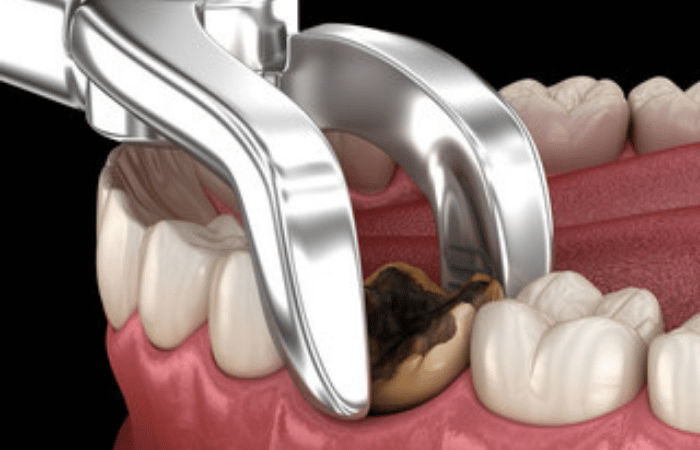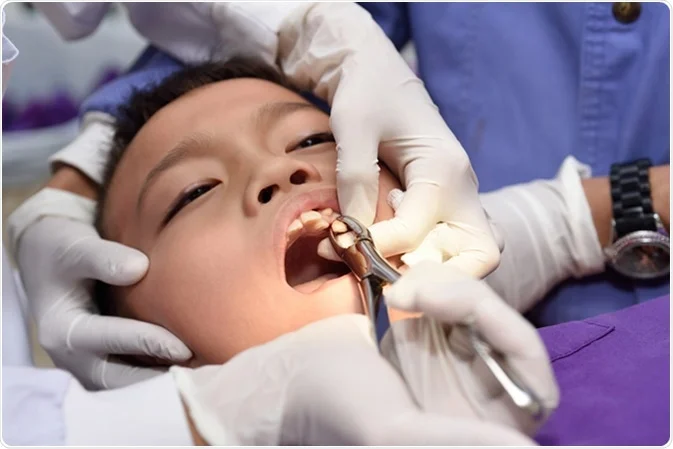WHAT IS Tooth Extraction?
Tooth extraction, also known as dental extraction or tooth removal, is a dental procedure in which a tooth is removed from its socket in the jawbone. There are various reasons why a tooth may need to be extracted, and the procedure can be carried out for different types of teeth, including primary (baby) teeth and permanent (adult) teeth. Here’s an overview of tooth extraction:


HELP YOU IN GETTING RID OF YOUR PAIN
Patients frequently present to the dental office with a complaint of dental pain. The causes are usually obvious, such as stock items or dental rot. These minor difficulties are readily resolved. However, there are many underlying causes for such apprehension. Most likely, you have developed an infection that has already penetrated the tooth roots. The longer it goes untreated, the more pain it causes the patient. If the severity of the dental problem is relatively severe, removing the tooth is the only method to alleviate the pain.
Reasons for Tooth Extraction:
- Dental Decay: Severe tooth decay that cannot be effectively treated with restorative procedures, such as fillings or root canals.
- Gum Disease: Advanced gum disease (periodontal disease) that has caused significant damage to the supporting structures of the tooth.
- Impacted Teeth: Wisdom teeth (third molars) that are impacted, causing pain, infection, or other dental problems.
- Orthodontic Reasons: To create space or make room for the alignment of crowded teeth as part of orthodontic treatment.
- Infection: A tooth with a severe infection or abscess that cannot be effectively treated with antibiotics or root canal therapy.
- Fractured or Broken Teeth: Teeth that are fractured, cracked, or broken beyond repair.
- Orthodontic Treatment: Removal of certain teeth as part of an orthodontic treatment plan.
- Preventive Measures: In some cases, teeth may be extracted to prevent potential future problems, such as impacted wisdom teeth.
The Tooth Extraction Procedure:
- Anesthesia: The dentist will administer a local anesthetic to numb the area around the tooth, ensuring that the patient is comfortable and pain-free during the procedure.
- Extraction: Using specialized dental instruments, the dentist or oral surgeon will gently loosen the tooth from its socket in the jawbone. For multi-rooted teeth, the tooth may be divided into sections to facilitate extraction.
- Removal: The tooth is carefully lifted and removed from the socket. In some cases, a small amount of bone may need to be removed.
- Closure: In most cases, a blood clot will form in the extraction site, and a gauze pad may be placed to help stop any bleeding. Sutures (stitches) may be used to close the wound.
- Recovery: The patient is provided with aftercare instructions, including information on pain management, oral hygiene, and diet restrictions.
- Healing: The healing process usually takes a few days to a few weeks, depending on the complexity of the extraction and the patient’s overall health.
Aftercare:
- Following tooth extraction, patients should avoid certain activities such as smoking, vigorous rinsing, or drinking through a straw, as these actions can disrupt the formation of a blood clot and lead to complications.
- Pain and swelling are common after extraction, but these symptoms can typically be managed with over-the-counter pain medications and ice packs.
- Good oral hygiene is crucial during the healing process to prevent infection.
Tooth extraction is a common dental procedure, and it is often necessary to preserve overall oral health and prevent further dental problems. Dentists strive to make the procedure as comfortable and painless as possible for the patient. In some cases, tooth replacement options, such as dental implants or bridges, may be considered to restore the function and appearance of the extracted tooth.
